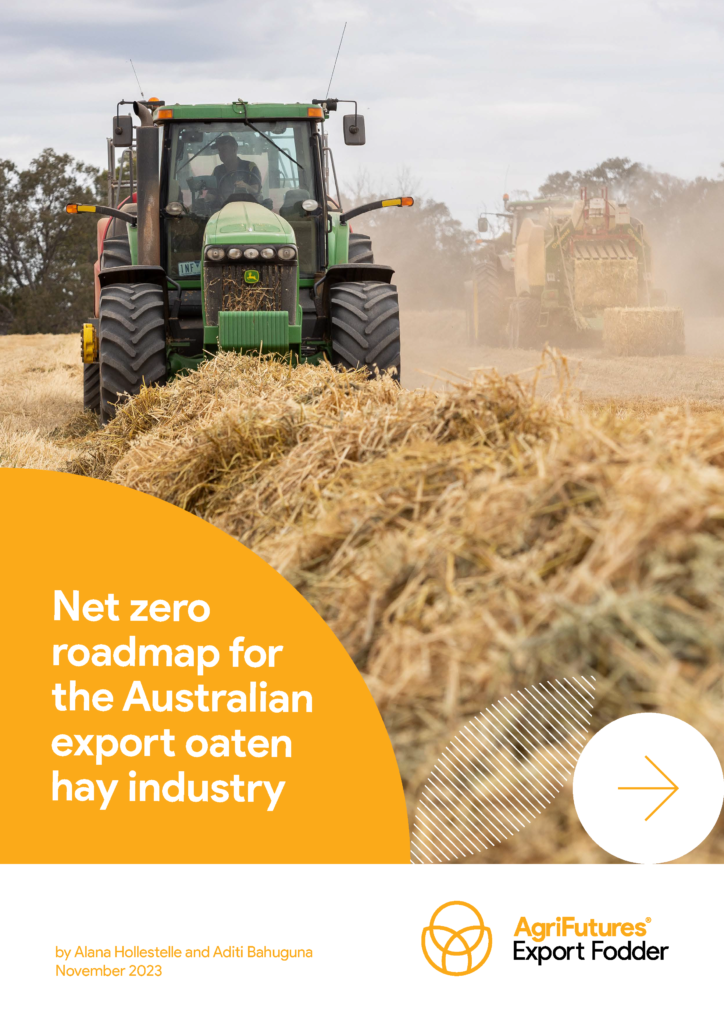Global exporters are likely to face growing pressure in coming years to reduce greenhouse gas emissions across their supply chains, and producers of fodder products such as oaten hay are no exception. Japan and South Korea, major importers of Australian oaten hay, are two of several nations increasing their climate ambitions.
The European Union has introduced its carbon border adjustment mechanism (CBAM), which has triggered industry to assess emerging threats that might result from insufficient action on emissions when it comes to international trade. Similarly, corporates are moving ahead with their own emissions-reduction ambitions and targets across their value chains, driven by shareholders, boards, financiers and regulators.
These emerging risk dynamics point to a need to baseline and reduce emissions across the export oaten hay industry supply chain. They also point to opportunity to increase the competitiveness of products that compete on lower-emissions credentials.
In response, the Australian export oaten hay industry has invested in a life cycle assessment (LCA) to understand the emissions profile of its supply chain, capturing emissions generated from the production of chemical inputs through to maritime transport. Complementing the LCA is this roadmap, which identifies the key research and development initiatives that can support the industry transition to net zero.
Emissions across the life cycle of export oaten hay products can be divided into six groups: (1) chemical production and transport emissions; (2) on-farm fuel use emissions; (3) soil and crop-related emissions; (4) domestic transport emissions; (5) processing facility emissions; and (6) maritime emissions. Understanding the emissions associated with each group is critical to understanding actions that can be taken to decarbonise the industry.
This roadmap has been structured around six key actions, representing different interventions. Five of the six actions relate to direct net emissions reduction, while the sixth relates to competitive positioning. The six actions are: (1) reduce emissions from additives; (2) electrify the value chain; (3) move towards 100% renewable energy procurement; (4) investigate low-emissions shipping options; (5) explore novel soil carbon sequestration options; and (6) continuously review competitive positioning.
Research initiatives presented under these actions are not intended to be an exhaustive or comprehensive set of decarbonisation options. Rather, they are intended to illustrate available and emerging pathways.





